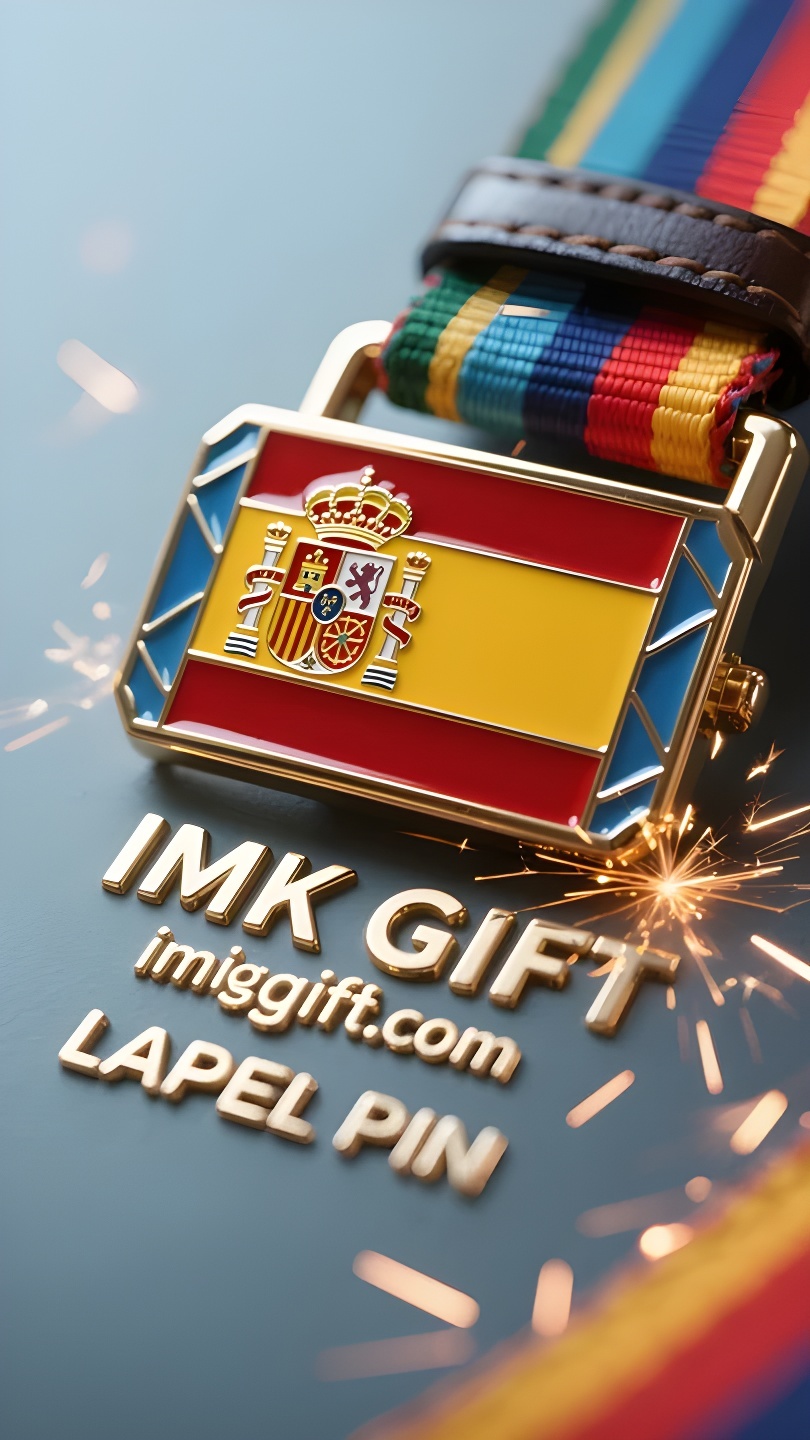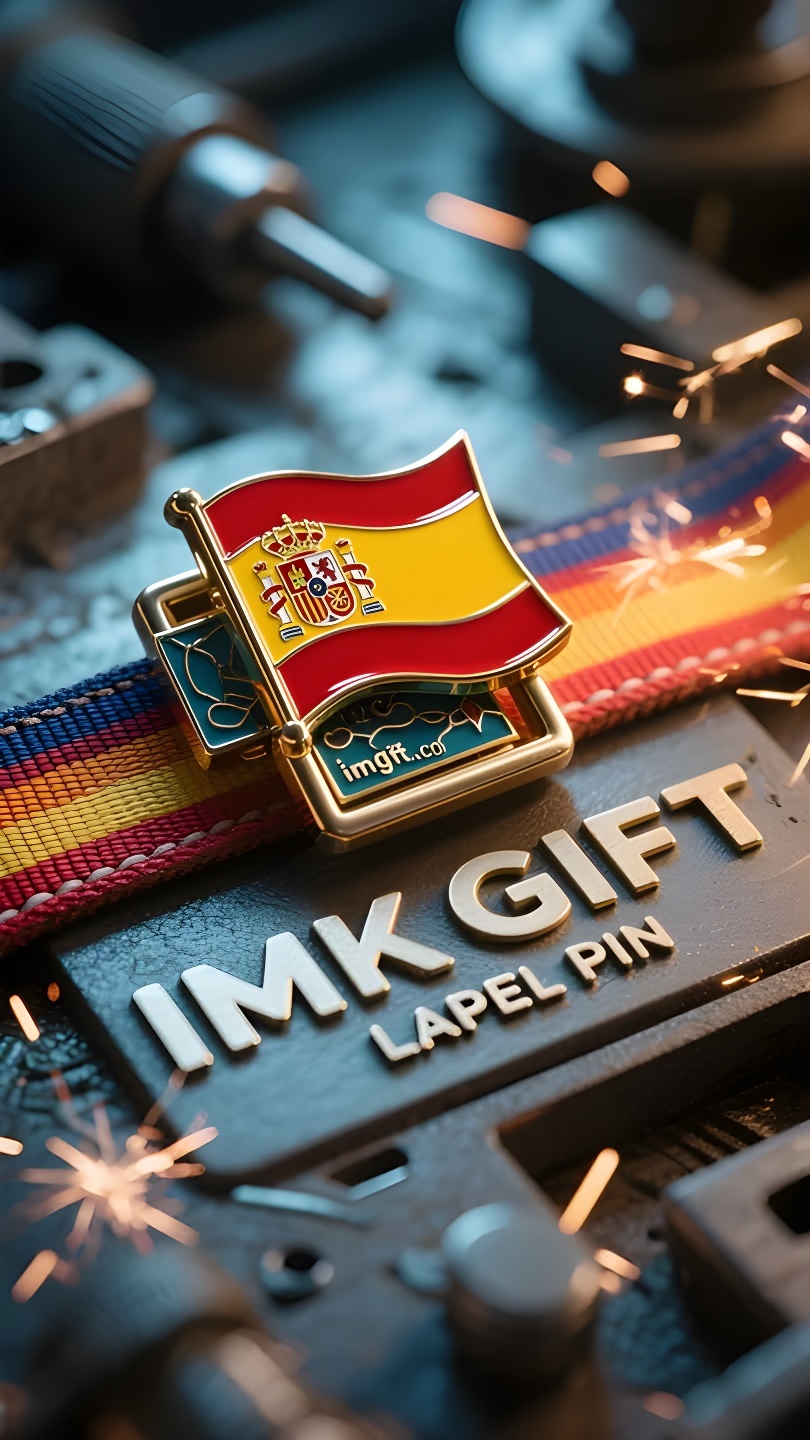in990-El-mar-de-estrellas-en-la-hebilla-de-bronce
▼
El 12 de octubre de cada año es el Día Nacional de España. Cuando la bandera nacional roja y amarilla ondea, las hebillas del cinturón con el emblema nacional en el pecho de las personas siempre reflejan una luz única. Esta hebilla de metal, portadora de historia y gloria, no es sólo un símbolo del espíritu nacional, sino también un código de creencias transmitido de generación en generación por el pueblo español. Las Columnas de Hércules del escudo nacional español representaban originalmente el fin del mundo en la mitología griega antigua, pero las palabras en latín “Plus Ultra” (más allá del límite) grabadas en la hebilla del cinturón cambiaron el “fin” al punto de partida. Hace quinientos años, fue con esta creencia que Colón atravesó la niebla del Estrecho de Gibraltar con tres barcos de vela; Hoy en día, mientras los atletas compiten en los Juegos Olímpicos y los científicos rompen barreras en el laboratorio, esta hebilla de cinturón todavía nos recuerda que los llamados límites no son más que hitos por conquistar. La bandera nacional roja y amarilla representa la sangre hirviente y la tierra fértil, mientras que la hebilla del cinturón representa las riendas que aprietan los ideales. Es como un juramento que une el destino del individuo y el del país: así como una hebilla debe morder firmemente el cinturón para permanecer estable, solo cuando cada ciudadano se adhiere al coraje y la tenacidad, el barco de la nación puede atravesar las olas de los tiempos y avanzar. Mientras los fuegos artificiales de celebración iluminan el cielo nocturno de Madrid, cada hebilla brillante del emblema nacional cuenta una historia: la verdadera gloria comienza con el desafío eterno de lo “imposible”.
Every October 12th is Spain’s National Day. When the red and yellow national flag is flying, the national emblem belt buckle on people’s chests always reflects a unique light. This metal buckle carrying history and glory is not only a symbol of national spirit, but also a code of faith passed down from generation to generation by the Spanish people. The Pillars of Hercules on the Spanish national emblem were originally the end of the world in ancient Greek mythology, but the Latin “Plus Ultra” engraved on the belt buckle rewrites “the end” as the starting point. Five hundred years ago, Columbus broke through the fog of the Strait of Gibraltar with three sailing ships with this belief; today, when athletes sprint in the Olympic arena and scientists break through the boundaries in the laboratory, this belt buckle is still reminding: the so-called limit is nothing more than a milestone to be conquered. The red and yellow national flag is boiling blood and fertile land, and the belt buckle is the reins that tighten the ideal. It is like a pledge, riveting the fate of the individual and the country – just as the buckle must bite the belt tightly to be stable, only when every citizen adheres to courage and tenacity can the ship of the nation break through the waves of the times. When the fireworks of the celebration illuminate the night sky of Madrid, each shining national emblem buckle is telling: true glory begins with the eternal challenge of “impossible”.
每年10月12日是西班牙国庆日,当红黄相间的国旗飘扬时,人们胸前的国徽皮带扣总会折射出独特的光芒。这枚承载历史与荣耀的金属扣环,不仅是民族精神的象征,更是西班牙人代代相传的信念密码。
西班牙国徽上的赫拉克勒斯之柱,原本是古希腊神话中世界的尽头,但皮带扣上镌刻的拉丁文“Plus Ultra”(超越极限),却将“尽头”改写为起点。五百年前,哥伦布正是怀揣这份信念,以三艘帆船冲破直布罗陀海峡的迷雾;今日,运动员在奥运赛场冲刺、科学家在实验室突破边界时,这枚皮带扣仍在提醒:所谓极限,不过是被征服的里程碑。
红黄国旗是沸腾的热血与丰收的土地,而皮带扣则是勒紧理想的缰绳。它像一道誓言,将个人与国家的命运铆合——正如扣环必须咬紧皮带才能稳固,唯有每个公民恪守勇气与坚韧,方能让民族之舟在时代浪潮中破浪前行。当庆典的烟花照亮马德里夜空,每一枚闪亮的国徽扣环都在诉说:真正的荣耀,始于对“不可能”的永恒挑战。
▼
Contact Us
📞 Tel: +0086-760-85286839
📧 Email: sales3@imkgift.com








